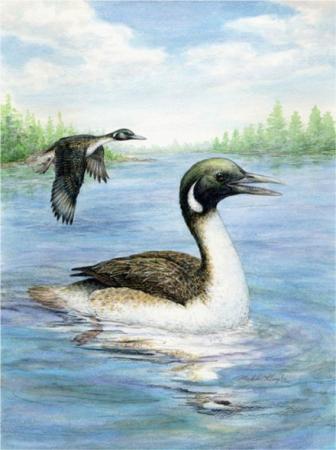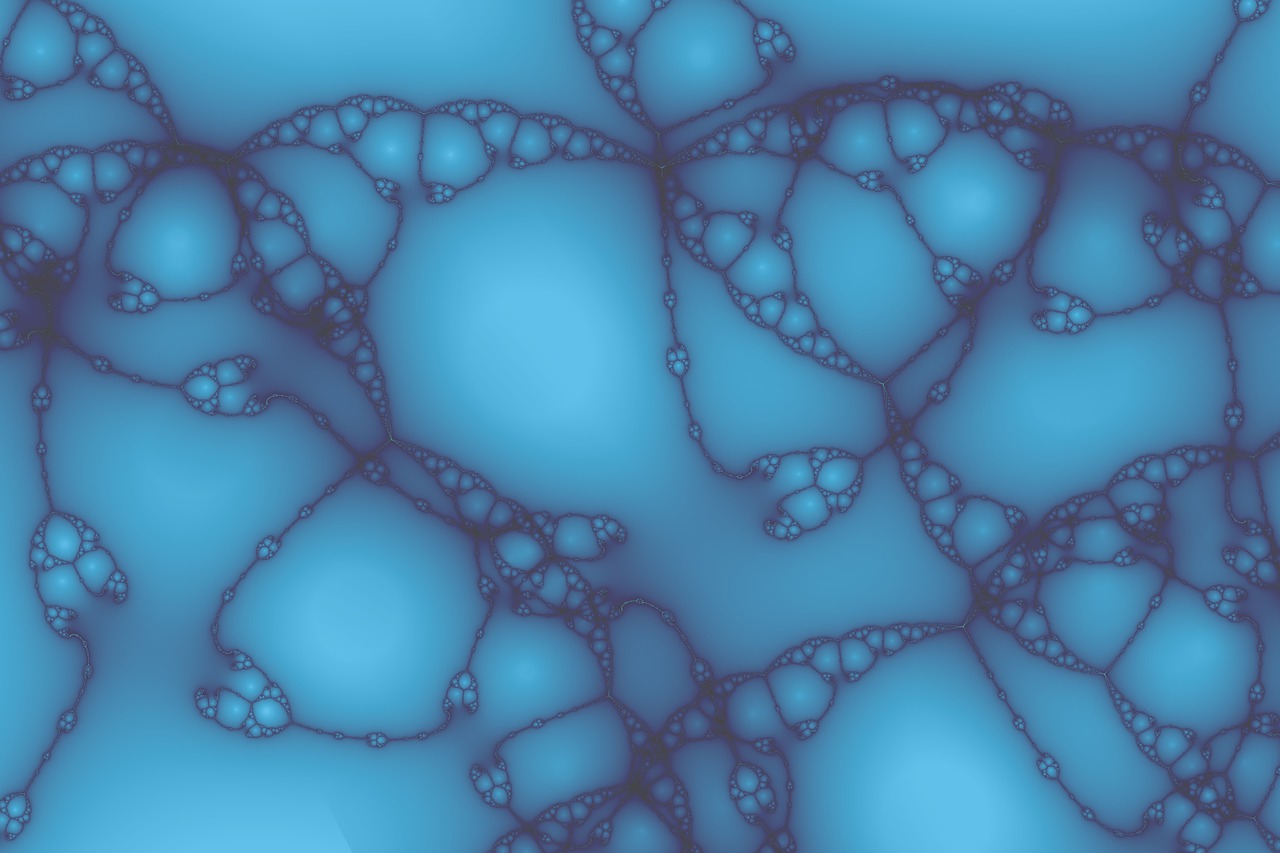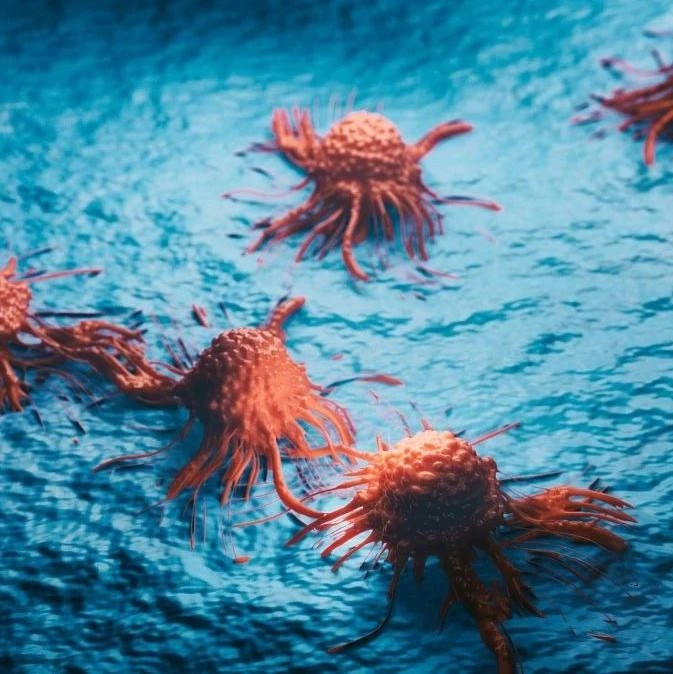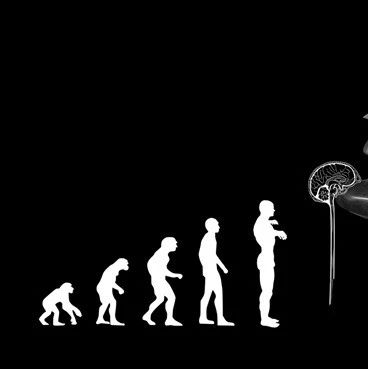美国能源部的SLAC国家加速实验室的科学家近期在描述早期鸟类的研究中又迈进了一大步,他们发现了1亿年前当恐龙仍主宰地球时的一种色素痕迹,这种色素是真黑素(eumelanin),它与鸟羽结构、其他色素一起,是影响早期鸟类羽毛图案的重要因素。在许多现代生物(包括人类)中,真黑素能够引起褐眼黑发。此项研究不仅使人们更加接近早期鸟类的原貌,对图案的研究也会提供诸多关于进化行为(比如伪装、交流与择偶)的信息。

图:圣贤孔子鸟化石中钙元素的X射线荧光图像,钙元素不仅在骨骼中含量很高,在绒毛中含量也很高
曼彻斯特大学的R.Wogelius说,真黑素源远流长,且仍活跃于许多现生有机体内。科学家们找到了一种新方法—同步辐射法(synchrotron radiation)来追踪化石内部的分子痕迹并成图。如果能够还原灭绝生物的真实色彩,那将会非常的吸引人。
研究者利用斯坦福同步辐射光源(Synchrotron Radiation Lightsource,SSRL)对两块鸟类化石进行了研究,分别是圣贤孔子鸟(Confuciusornis sanctus)和玉门甘肃鸟(Gansus yumenensis),前者生活于1.2亿年前,是恐龙与鸟类之间的重要进化环节,它拥有最早的似鸟嘴结构;而后者则是已知最早的现代鸟类,生活于1亿年前,与现代鸊鷉有些相似。早先的研究方法是通过黑色素结构信息来推测化石内部色素的分布及颜色,这种方法有其局限性,因此,研究者打算利用SSRL的两种复杂X射线仪器来直接追踪色素的化学痕迹。

图:玉门甘肃鸟复原图
第一种仪器可以整体辨别化石中的特征化学元素,从而复原化石的色素图形。对圣贤孔子鸟的组织、骨骼和围岩的特征化学元素的检测,能够提供极高分辨率的色素图案。痕迹元素中最重要的就是铜,当含量较高时,铜是有害的。铜在化石中含量丰富,所在位置在形成的色素图案中呈可怕的亮红色,而这些位置曾经就是羽毛的所在。研究者利用第二种仪器检测了玉门甘肃鸟,他们发现铜在化石中的赋存形式与在真黑素中相同。
将特征化学元素与铜元素分布结合起来,研究者就能得到化石鸟类羽毛的真实颜色图案。研究者在现代鸟类及乌贼标本内发现了相似的关系,验证了研究结论。
这项研究及新技术将会省去猜测已灭绝恐龙和鸟类颜色的许多时间,为古代生命的生物化学研究打开了一扇窗,同时也为了解它们的习性(比如食谱、环境等)提供信息。研究者最后着重强调,他们使用的化石标本非常珍贵,其中蕴藏着许多不解之谜的答案。
生物探索推荐原文摘要
doi: 10.1073/pnas.1001569107
Archaeopteryx feathers and bone chemistry fully revealed via synchrotron imaging
Abstract: Evolution of flight in maniraptoran dinosaurs is marked by the acquisition of distinct avian characters, such as feathers, as seen in Archaeopteryx from the Solnhofen limestone. These rare fossils were pivotal in confirming the dinosauria-avian lineage. One of the key derived avian characters is the possession of feathers, details of which were remarkably preserved in the Lagerst?tte environment. These structures were previously simply assumed to be impressions; however, a detailed chemical analysis has, until now, never been completed on any Archaeopteryx specimen. Here we present chemical imaging via synchrotron rapid scanning X-ray fluorescence (SRS-XRF) of the Thermopolis Archaeopteryx, which shows that portions of the feathers are not impressions but are in fact remnant body fossil structures, maintaining elemental compositions that are completely different from the embedding geological matrix. Our results indicate phosphorous and sulfur retention in soft tissue as well as trace metal (Zn and Cu) retention in bone. Other previously unknown chemical details of Archaeopteryx are also revealed in this study including: bone chemistry, taphonomy (fossilization process), and curation artifacts. SRS-XRF represents a major advancement in the study of the life chemistry and fossilization processes of Archaeopteryx and other extinct organisms because it is now practical to image the chemistry of large specimens rapidly at concentration levels of parts per million. This technique has wider application to the archaeological, forensic, and biological sciences, enabling the mapping of “unseen” compounds critical to understanding biological structures, modes of preservation, and environmental context.







